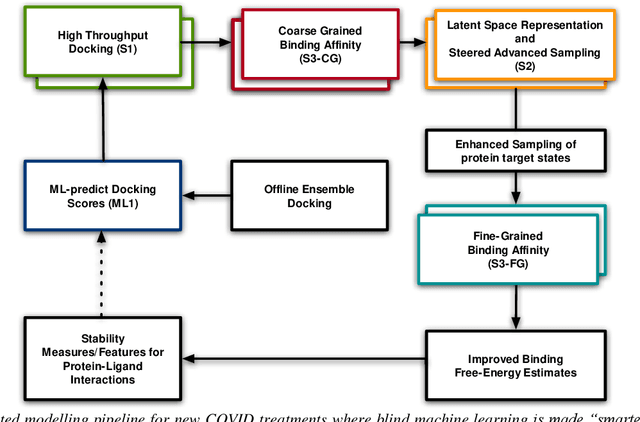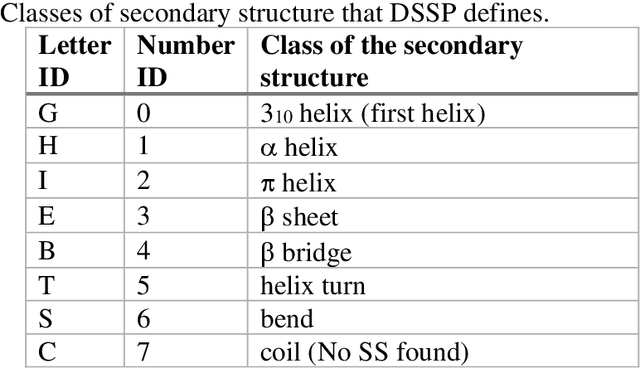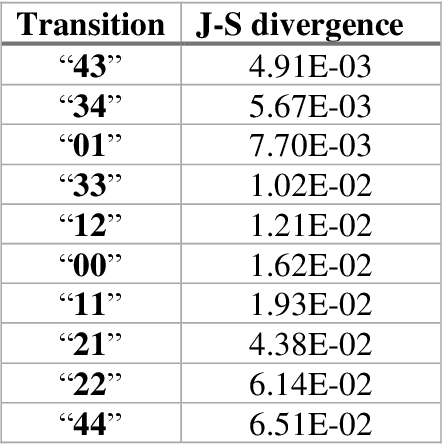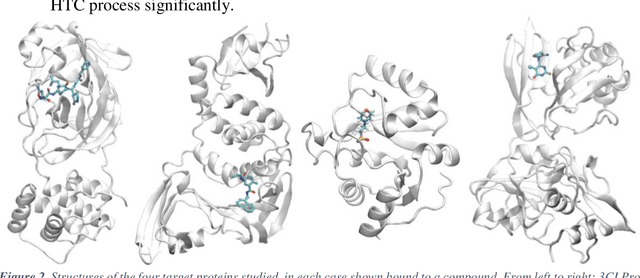Alberto Di Meglio
Pandemic Drugs at Pandemic Speed: Accelerating COVID-19 Drug Discovery with Hybrid Machine Learning- and Physics-based Simulations on High Performance Computers
Mar 04, 2021



Abstract:The race to meet the challenges of the global pandemic has served as a reminder that the existing drug discovery process is expensive, inefficient and slow. There is a major bottleneck screening the vast number of potential small molecules to shortlist lead compounds for antiviral drug development. New opportunities to accelerate drug discovery lie at the interface between machine learning methods, in this case developed for linear accelerators, and physics-based methods. The two in silico methods, each have their own advantages and limitations which, interestingly, complement each other. Here, we present an innovative method that combines both approaches to accelerate drug discovery. The scale of the resulting workflow is such that it is dependent on high performance computing. We have demonstrated the applicability of this workflow on four COVID-19 target proteins and our ability to perform the required large-scale calculations to identify lead compounds on a variety of supercomputers.
The BioDynaMo Project: a platform for computer simulations of biological dynamics
Jan 19, 2018Abstract:This paper is a brief update on developments in the BioDynaMo project, a new platform for computer simulations for biological research. We will discuss the new capabilities of the simulator, important new concepts simulation methodology as well as its numerous applications to the computational biology and nanoscience communities.
The BioDynaMo Project
Jul 10, 2016Abstract:Computer simulations have become a very powerful tool for scientific research. Given the vast complexity that comes with many open scientific questions, a purely analytical or experimental approach is often not viable. For example, biological systems (such as the human brain) comprise an extremely complex organization and heterogeneous interactions across different spatial and temporal scales. In order to facilitate research on such problems, the BioDynaMo project (\url{https://biodynamo.web.cern.ch/}) aims at a general platform for computer simulations for biological research. Since the scientific investigations require extensive computer resources, this platform should be executable on hybrid cloud computing systems, allowing for the efficient use of state-of-the-art computing technology. This paper describes challenges during the early stages of the software development process. In particular, we describe issues regarding the implementation and the highly interdisciplinary as well as international nature of the collaboration. Moreover, we explain the methodologies, the approach, and the lessons learnt by the team during these first stages.
 Add to Chrome
Add to Chrome Add to Firefox
Add to Firefox Add to Edge
Add to Edge